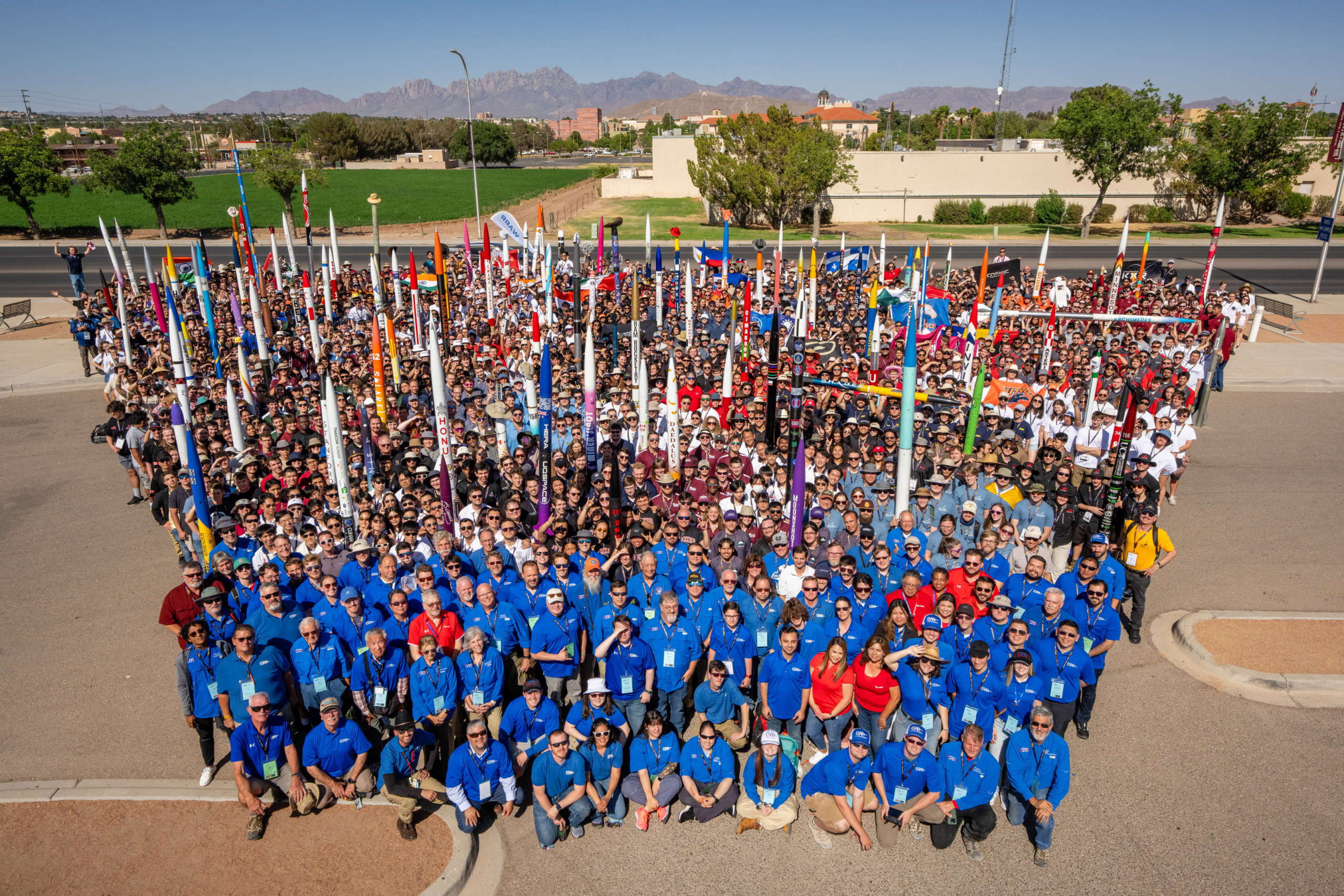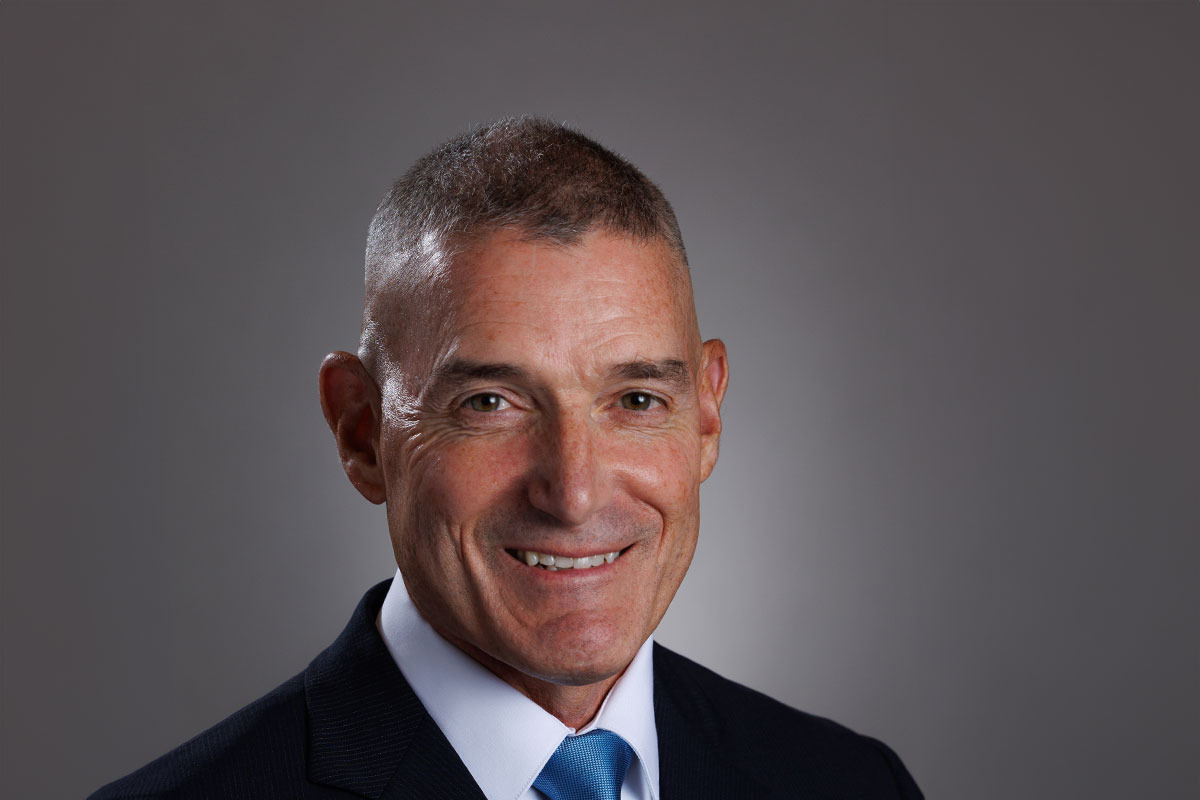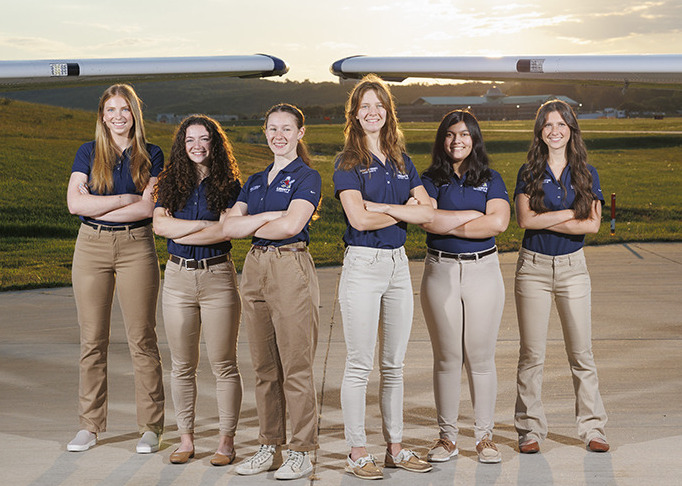Search News Archives
Filter News Articles
Additional Navigation
Liberty Rocketry team earns top-10 finish at Spaceport America Cup
July 9, 2024 : By Ted Allen - Office of Communications & Public Engagement
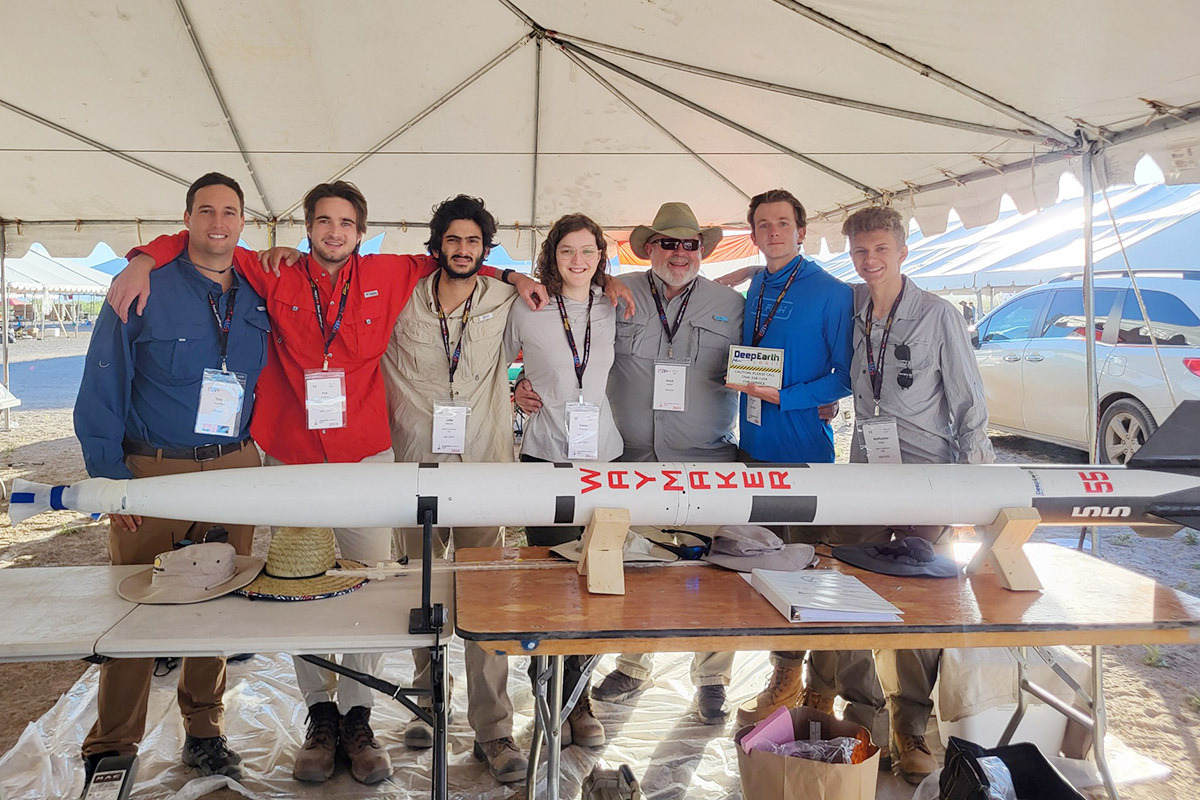
The Liberty University rocketry team’s second project, WAYMAKER, landed in ninth place out of 122 entries at the Spaceport America Cup, the world’s largest intercollegiate rocketry conference and competition. The event, held June 17-22 in Las Cruces, N.M., attracted more than 5,000 students from five continents.
The team made its debut in the competition last year, when it placed 39th.
“Motivated by the success of our very first rocket, Genesis, the team continued to improve upon its methodology to develop a truly world-class rocket,” said Kye Gonino, a rising senior mechanical engineering student who served as the team’s chief engineer and project manager. “The team’s success was the result of countless hours dedicated to research, engineering design, manufacturing, and, perhaps most crucially, unwavering faith.”
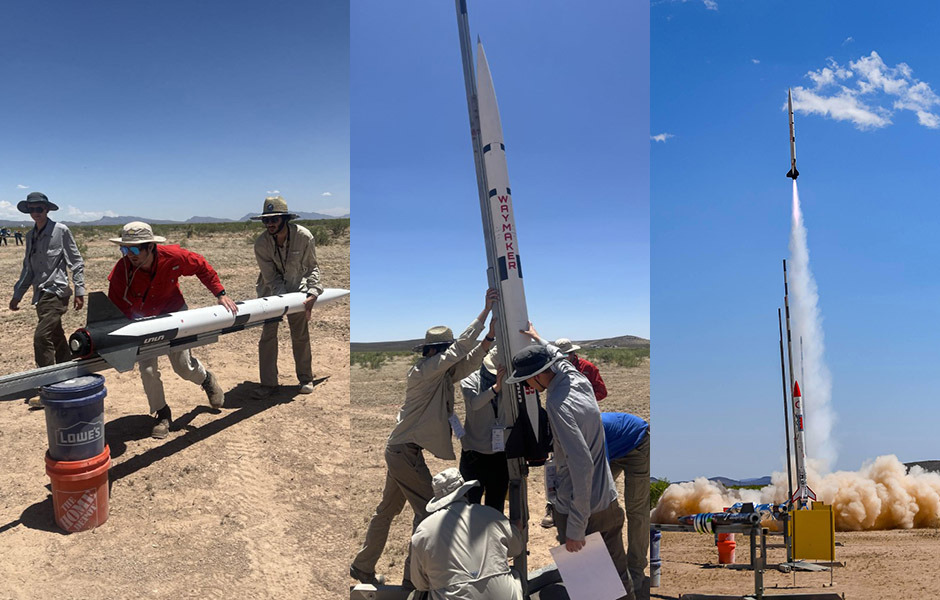
One of several competition teams sponsored by the School of Engineering, the rocketry team is made up of more than 40 students from various engineering disciplines as well as others majoring in mathematics and computer science. Under the guidance of Dr. Tate Fonville, its faculty advisor, and team mentor Mark Miller, the students spent the fall semester in the design phase before manufacturing and testing the rocket throughout the spring semester.
Liberty finished fifth in the 10K Commercial Off-The-Shelf (COTS) category, behind only teams from Istanbul (Turkey) Technical University, BYU, University of Alberta (Canada), and Utah State University and ahead of universities such as Arizona, Baylor, Clemson, Georgia, Florida, New Mexico, New Mexico State, Ohio State, Stanford, Texas A&M, Texas Tech, Virginia, VCU, and Virginia Tech.
“The team absolutely improved,” said Luke Steiner, a rising senior computer engineering student who served as the lead manufacturing engineer. “The rocket performed well. There were no snafus or hiccups along the way. It was a very smooth operation. The rocket was definitely very aerodynamic, and our recovery was more successful this year.”
The team members, divided into four sub-teams — aerodynamics, avionics and payload, propulsion, and recovery — formed strong bonds throughout the school year, working with the united purpose of designing and manufacturing one of the best student-built rockets in the world.
“One of the big reasons I love the team is the friendships and relationships formed along the way,” said Gonino, who took time off from his internship with Framatome in Lynchburg, Va., to travel with six other students to New Mexico. “We all share in the same passion that drives those relationships and it’s very fun.”
Team members had the opportunity to network with recruiters from Blue Origin, Los Alamos National Laboratory, and other high-tech aerospace companies, as well as go sightseeing at New Mexico’s White Sands National Park and Dripping Springs Natural Area.
“For all of our careers, this competition was extremely valuable because it teaches us how to work with a team, and with other engineers, to build a strong product given a deadline,” Steiner said.
Despite the complexity of the project, requiring tremendous precision and coordination, the team exceeded its expectations every step of the way to the launchpad.
“We came in well before the deadline, and well under budget, which are two very important headlines,” Steiner said. “The overall quality and craftsmanship of the rocket was very strong.”
Liberty’s rocket passed all safety inspections and was cleared to launch on June 19, the first day of competition. Its flight trajectory peaked at an altitude of 10,446 feet, 4.5 percent over the projection.
“The launch went exactly as we wanted it to,” Gonino said. “Everything went really well, other than the discrepancy of altitude, which was the only abnormality.”
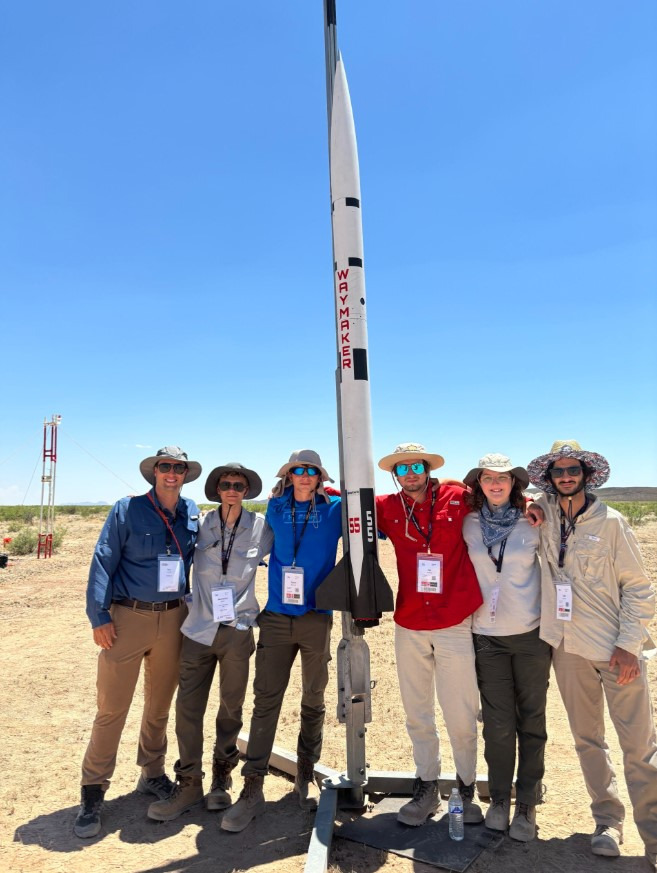
The team’s expected launch time was 11 a.m., when the temperatures were in the 80s, but the actual launch was delayed by weather activity and wind speeds to nearly 3 p.m., when the temperature had risen to 104 degrees.
“Environmental conditions can drastically influence the performance of the rocket,” Gonino said. “That was the likely reason for the discrepancy.”
Gonino noted that WAYMAKER was less than 2 percent off the 10,000-feet target altitude for both of its test launches, on March 24 in Culpepper, Va., and May 6 in a suburb of Columbus, S.C.
As the team drove away from its successful launch, temperatures were peaking at 110 degrees for the day and a dust storm swept across the Jornada del Muerto desert basin, damaging the launch site, setting other teams even farther behind schedule.
The closest team to the projected mark — the University of Louisiana at Lafayette with a rocket that peaked at 10,002 feet (0.02 percent over the target) — won the Barrowman Award for Flight Dynamics.
Flight performance was a large factor in the total points teams earned, with others including design and build quality, presentation, technical report, recovery, and sportsmanship. Compared to last year, Liberty’s team posted higher scores in most every category of the competition.
Complete results are available online.
“It was a lot of work, but easier than Genesis was because we had that under our belt,” Gonino said. “We learned so many things, from the design of the rocket to how the team was organized to make it operate more efficiently.”
Gonino said with its top-10 overall showing, the team will determine next week if it will move up to the 30,000-foot COTS category for next year’s competition, when most of this past year’s team leads will serve as advisors.
